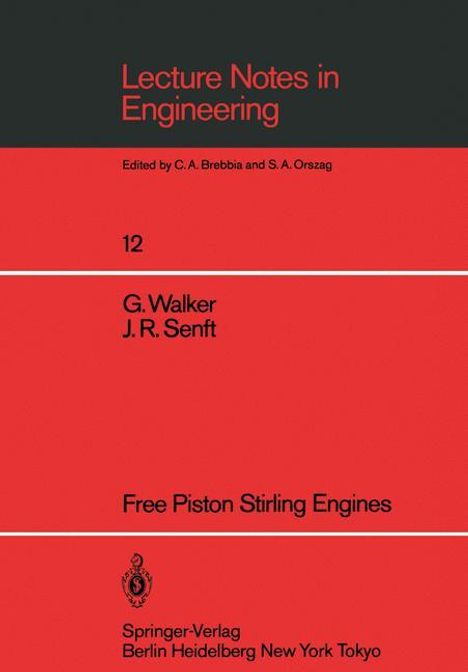Graham Walker: Free Piston Stirling Engines, Kartoniert / Broschiert
Free Piston Stirling Engines
(soweit verfügbar beim Lieferanten)
- Verlag:
- Springer, 06/1985
- Einband:
- Kartoniert / Broschiert, Paperback
- Sprache:
- Englisch
- ISBN-13:
- 9783540154952
- Artikelnummer:
- 2957931
- Umfang:
- 284 Seiten
- Copyright-Jahr:
- 1985
- Gewicht:
- 492 g
- Maße:
- 247 x 170 mm
- Stärke:
- 23 mm
- Erscheinungstermin:
- 1.6.1985
- Hinweis
-
Achtung: Artikel ist nicht in deutscher Sprache!
Klappentext
DEFINITION AND NOMENCLATURE A Stirling engine is a mechanical device which operates on a closed regenerative thermodynamic cycle with cyclic compression and expansion of the working fluid at different temperature levels. The flow of working fluid is controlled only by the internal volume changes, there are no valves and, overall, there is a net conversion of heat to work or vice-versa. This generalized definition embraces a large family of machines with different functions; characteristics and configurations. It includes both rotary and reciprocating systems utilizing mechanisms of varying complexity. It covers machines capable of operating as a prime mover or power system converting heat supplied at high tempera ture to output work and waste heat at a lower temperature. It also covers work-consuming machines used as refrigerating systems and heat pumps abstracting heat from a low temperature source and delivering this plus the heat equivalent of the work consumed to a higher tem perature. Finally it covers work-consuming devices used as pressure generators compressing a fluid from a low pressure to a higher pres sure. Very similar machines exist which operate on an open regen erative cycle where the flow of working fluid is controlled by valves. For convenience these may be called Ericsson engines but unfortunate ly the distinction is not widely established and regenerative machines of both types are frequently called 'Stirling engines'.



